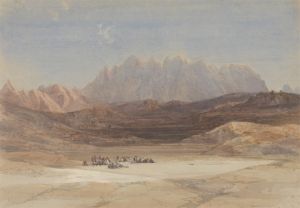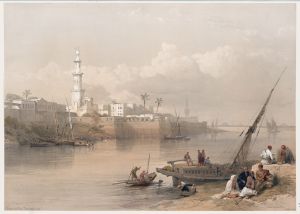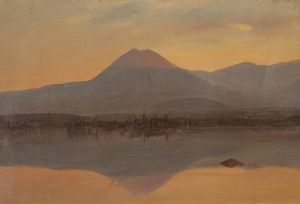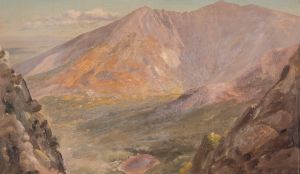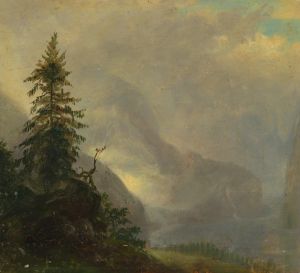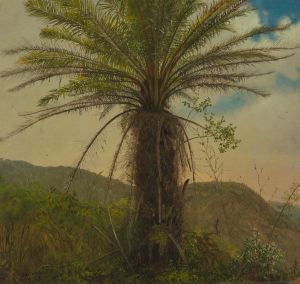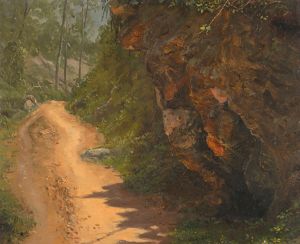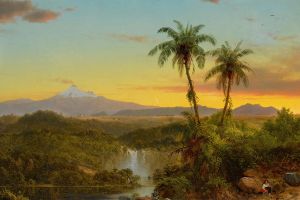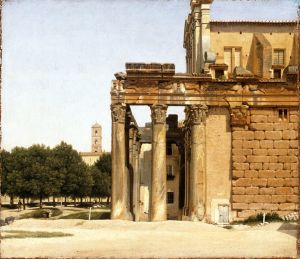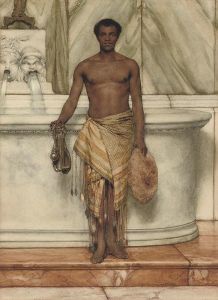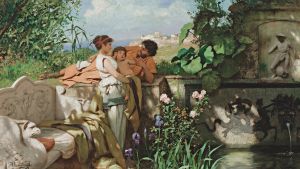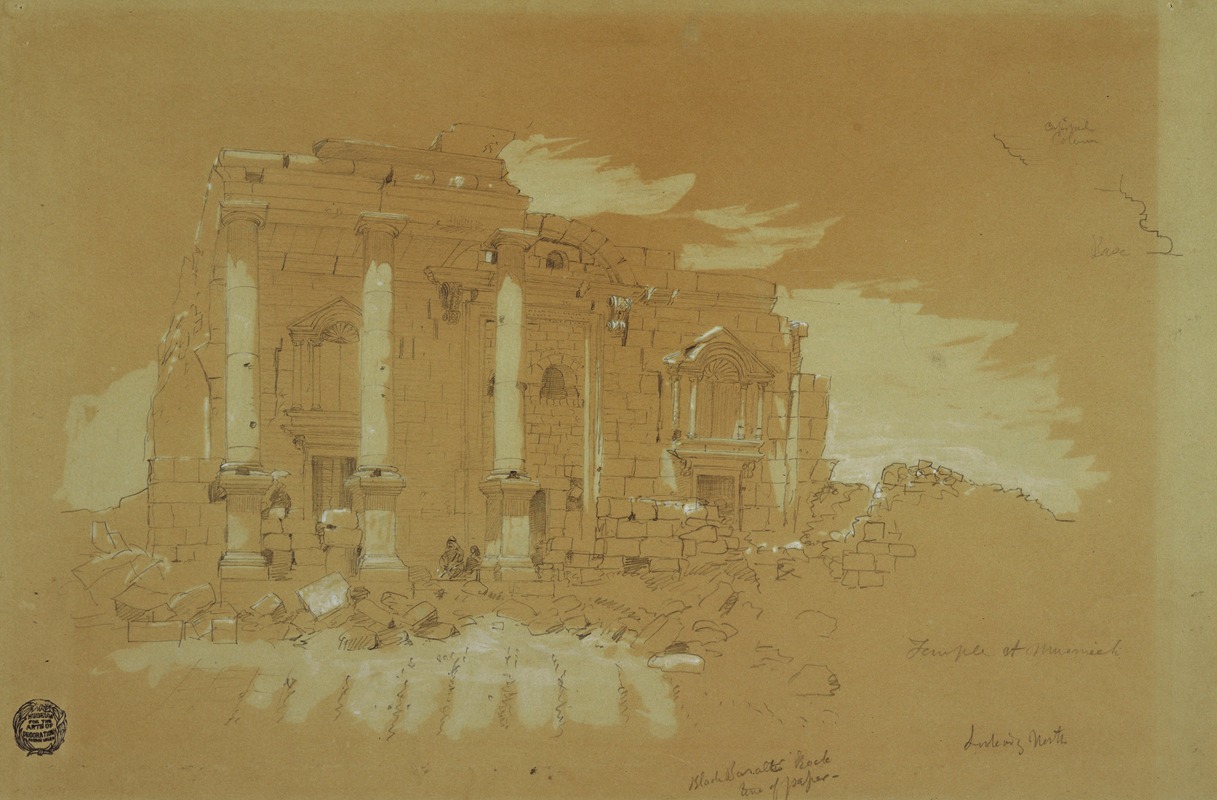
Temple at Mismiyeh, Syria
A hand-painted replica of Frederic Edwin Church’s masterpiece Temple at Mismiyeh, Syria, meticulously crafted by professional artists to capture the true essence of the original. Each piece is created with museum-quality canvas and rare mineral pigments, carefully painted by experienced artists with delicate brushstrokes and rich, layered colors to perfectly recreate the texture of the original artwork. Unlike machine-printed reproductions, this hand-painted version brings the painting to life, infused with the artist’s emotions and skill in every stroke. Whether for personal collection or home decoration, it instantly elevates the artistic atmosphere of any space.
Frederic Edwin Church was a prominent American landscape painter and a central figure in the Hudson River School of American art. Known for his grand and detailed landscapes, Church's work often depicted dramatic natural scenes and exotic locations. One of his lesser-known works is "Temple at Mismiyeh, Syria," which reflects his interest in the Middle East and his travels there.
Frederic Edwin Church was born on May 4, 1826, in Hartford, Connecticut. He studied under Thomas Cole, the founder of the Hudson River School, and quickly developed his own style characterized by meticulous attention to detail and a fascination with light and atmosphere. Church's travels played a significant role in his artistic development, as he sought to capture the diverse landscapes and cultures he encountered.
In the 1860s, Church embarked on a journey to the Middle East, a region that fascinated many Western artists and intellectuals of the time. This trip was part of a broader trend of Orientalism, where Western artists depicted Eastern subjects, often romanticizing them. Church's travels took him to several locations, including Syria, where he painted "Temple at Mismiyeh."
The painting "Temple at Mismiyeh, Syria" is an example of Church's ability to capture the essence of a place with precision and beauty. The artwork depicts an ancient temple, showcasing Church's interest in historical and architectural subjects. His use of light and shadow highlights the temple's intricate details, while the surrounding landscape is rendered with the lushness and vibrancy typical of his work.
Church's Middle Eastern paintings, including "Temple at Mismiyeh," reflect his interest in the region's ancient history and its architectural marvels. These works are characterized by their detailed representation of the landscape and the structures within it, demonstrating Church's skill in capturing both the grandeur and the subtleties of his subjects.
While "Temple at Mismiyeh, Syria" may not be as widely recognized as some of Church's other works, such as "The Heart of the Andes" or "Niagara," it remains an important part of his oeuvre. It exemplifies his ability to blend realism with a sense of the sublime, transporting viewers to distant lands and times.
Church's work had a significant impact on American art, and his paintings continue to be celebrated for their technical mastery and their ability to evoke a sense of wonder. His travels and the resulting artworks contributed to a greater understanding and appreciation of the world's diverse landscapes and cultures among his contemporaries.
Today, Frederic Edwin Church is remembered as one of America's greatest landscape painters. His works are housed in major museums and collections, where they continue to inspire and captivate audiences. "Temple at Mismiyeh, Syria" stands as a testament to Church's enduring legacy and his passion for exploring and depicting the world's beauty.





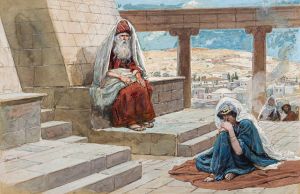
![Great gateway leading to the Temple of Karnac [Karnak], Thebes. [Title vignette, vol. 2]](/imgs/217399/s/david-roberts-great-gateway-leading-to-the-temple-of-karnac-karnak-thebes-title-vignette-vol-2-29844773.jpg)
